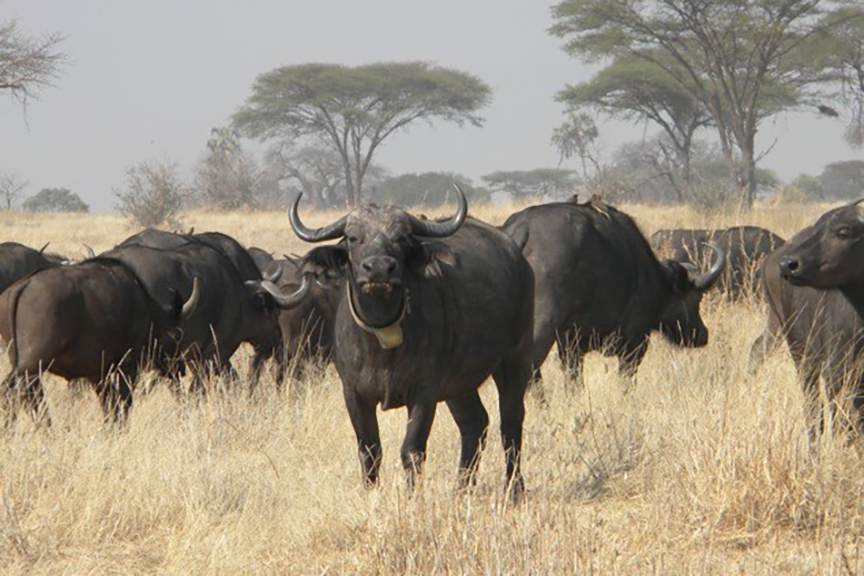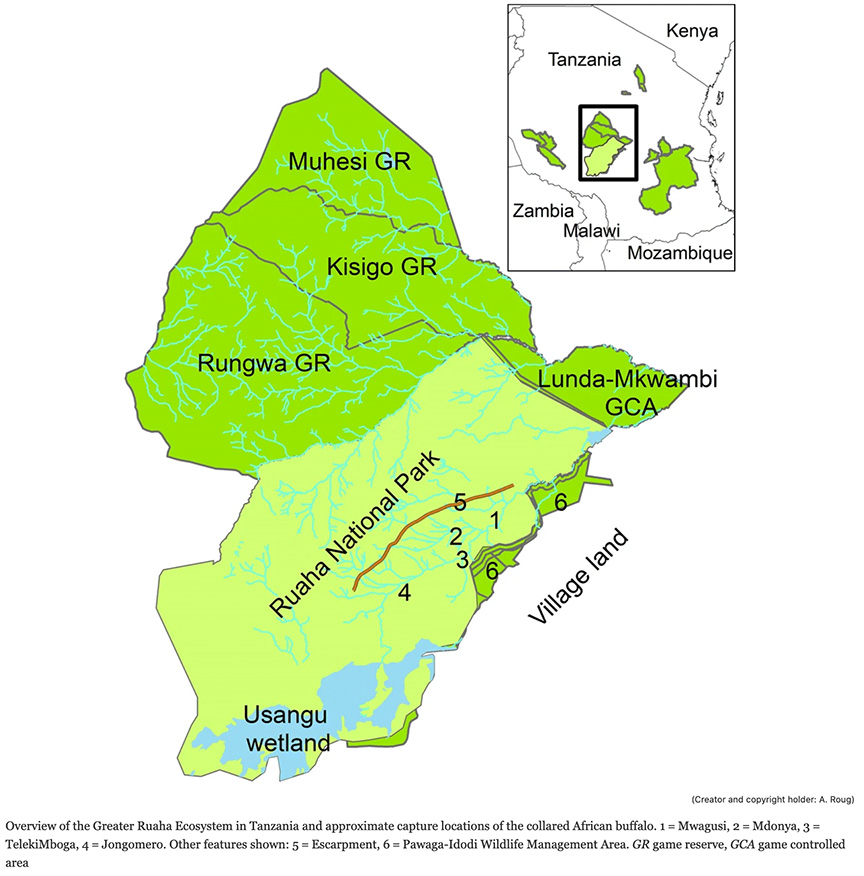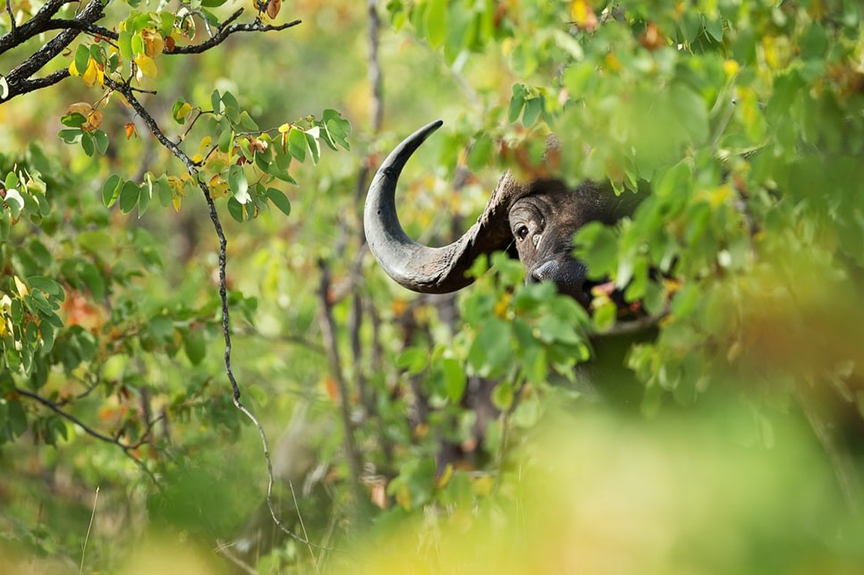
The African buffalo population in and around Tanzania’s Ruaha National Park (RNP) has reportedly been on the decline for decades and researchers funded in part by the Safari Club International Foundation (SCIF) went to work to figure out why. Prior to this series of projects, little was known about the habits and health of the buffalo herds in this region. New results from this effort have recently been published. African buffalo, or Cape buffalo, are an iconic species to both hunters and tourists as one of Africa’s legendary “Big Five” (along with rhinos, elephants, leopards, and lions).
Roughly the size of the state of New Jersey, the RNP represents almost 8,000 square miles of varied habitat including miombo woodland in the south-western part of the park and commiphora-combretum woodland and acacia Savannah in the central and eastern parts of the park. The park is buffered by surrounding game reserves, wildlife management areas, and rural communities. Hunting operations in game reserves outside the park generate revenue for local communities, and declining buffalo herds would have a negative economic impact. The Great Ruaha River runs through the heart of this region; however, the river isn’t quite as great as it once was. Water diversions upstream for agricultural irrigation and human development have left flows and tributaries running dryer over the course of the last few decades, leaving the water-dependent buffalo herds with less suitable habitat. As a result, safari operators have been seeing fewer buffalo in the park and a comparison of population estimates made using aerial counts by park staff, the Tanzania Wildlife Research Institute and other researchers from 2004 and 2013 confirmed a decline in buffalo numbers and indicated the range of suitable habitat for the RNP herds could be shrinking.

As water sources become more limited, the interaction between buffalo and domestic livestock may increase, possibly elevating the risk of interspecies disease transmission. Bovine tuberculosis occurs in regional cattle herds, and the disease is transmissible to buffalo. As a part of the investigation, researchers evaluated whether disease possibly was contributing to the buffalo decline.
In 2014, SCIF began funding a collaborative project with the University of California at Davis and the Soikone University of Agriculture, based in Tanzania (Health for Animals and Livelihood Improvement Project, HALI), to explore potential causes behind RNP’s declining buffalo numbers. Dr. Annette Roug, as well as HALI and Ruaha National Park staff, equipped 12 buffalo with satellite tracking collars and monitored their movements and habitat use through 2017. They also collected blood, hair, and fecal samples from a total of 40 buffalo to analyze for prevalence of diseases such as bovine tuberculosis, brucellosis, and Rift Valley Fever.

Data from the tracking collars provided information on the herds seasonal movements and allowed researchers to identify key areas of habitat and determine the likelihood of interactions with domestic cattle in adjacent community areas. The movement data showed that buffalo exhibited limited movements during the dry season, staying closely associated with the Great Ruaha River. They ranged much more widely during the wet season, but only rarely came into contact with domestic cattle. These data can also be used to determine the vulnerability of the buffalo herds to poaching from areas adjacent to the park.
Bovine tuberculosis was present at a relatively high 23% prevalence, but no clinical signs of the disease were observed. Buffalo also had antibodies indicating exposure to brucellosis (18%) and Rift Valley fever (8%) and two buffalos showed clinical signs of brucellosis. Though it’s possible that a high prevalence of bovine tuberculosis and other diseases could temporarily negatively impact buffalo herds already under stress, researchers concluded that disease is having little to no impact on the population in most years.
Overall, the herds in the park appear to be in good general health with adequate calf production. Data also showed that calf production varied with rainfall. With disease eliminated from the list of likely suspects and more information on the herds’ home ranges and movements, researchers speculated that the decline has been caused by the increased drying of the Ruaha River in the 1990’s and early 2000’s. Buffalo are strictly water dependent, so reduced seasonal range availability could lead to a lower carrying capacity and consequent population decline.

Fortunately, the river flow has gradually improved since 2008; however, there have been additional severe droughts in recent years. Available habitat for the buffalo will increase if the river flow recovers over time. However, continuous monitoring of population numbers and demographics will be needed in order to observe such trends and future movement data.
Information collected from this project will allow for better management and conservation of Cape buffalo and identifying the factors driving growth of buffalo herds will help ensure the long-term sustainability of these herds through RNP and Tanzania. Maintaining herd levels at a robust enough population for the continuation of management for photographic tourism and hunting will be vital to the effort as well. Buffalo are among the most economically important wildlife species on both the game reserves and RNP, and safari companies generate significant revenue from buffalo hunting and photo tourism while programs are improving to increase the economic impact safari operations have for rural communities as well.
SCIF was proud to have contributed to this important work. If you’re interested in learning more about this research, check out this video from the research team.
